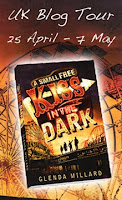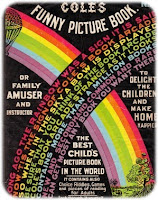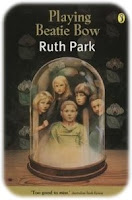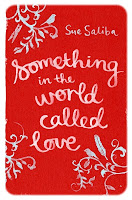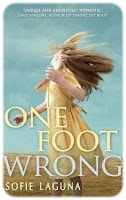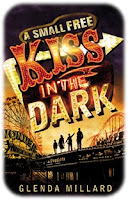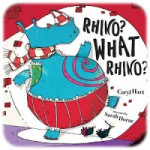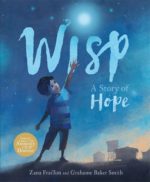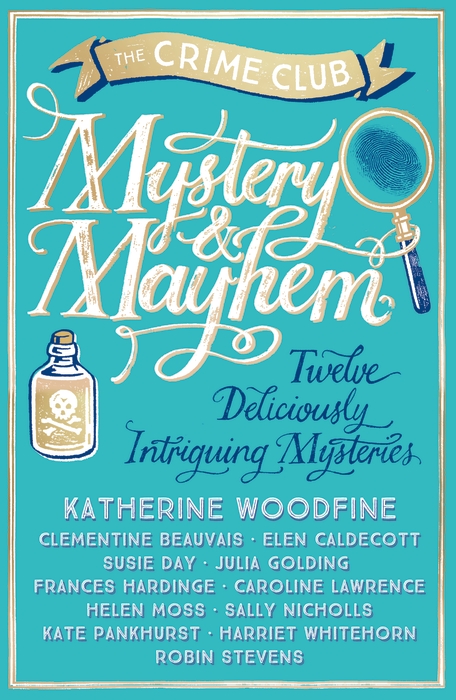I am chuffed to be taking part in the blog tour to celebrate the publication of Glenda Millard’s “A Small Free Kiss in the Dark”, a novel that I found immensely touching or thought-provoking (see my review here). I know little of Australian children’s literature, and therefore asked Glenda whether she would be kind enough to share with us her top five Australian children’s and YA books.
This is a difficult question to answer because there are so many novels I’ve loved reading. The five I’ve chosen are very different types of books. They don’t all strictly meet your criteria of YA or children’s novels. But I hope you find the selection interesting.
Rather than comment individually on whether these books have influenced me or my writing (which are, in a way, inseparable) I’d like to state at the outset that I firmly believe reading and being read to, equipped me with many of the necessary skills to be a writer. I left school at 15. My father was a lay preacher. From the age of two I lay under the pews at the Sunday evening service and listened to him tell stories. During the week, while Dad worked the night shift at a foundry, drilling holes in sheets of metal, my sister and I would get into bed with Mum and she’d read to us before we went to sleep. Without knowing it, I was acquiring an understanding of beginnings, endings, tension, mystery, metaphors and similes. I was learning to shape a story, listening to the music of language and storing it in my head until I began to write.
There wasn’t much money to spare at our house. Most of the books my sister and I owned were given to us as birthday or Christmas gifts and almost all of them were written by people who weren’t Australian. I read whatever I could get my hands on. My mother had a few books of poetry written by Adam Lindsay Gordon and Andrew Barton (Banjo) Paterson. My father collected Georgette Heyer period romances and my cousins were comic-fiends. I read them all. I’d like to start my list with one of the earliest books I owned.
Cole’s Funny Picture Book.
My copy of this book was a Christmas Gift. Its author, Edward William Cole, was born at Woodchurch, Kent in England in 1832 and migrated to Australia in 1852. In 1865 he started a bookshop in Melbourne, Victoria. The business prospered and he added a printing department where he compiled the first of the Cole’s Funny Picture Books and launched it on Christmas Eve 1879. These books were full of puzzles, pictures, games, riddles, limericks, optical illusions and writings about innumerable odd and interesting topics.
I think it’s vitally important for children to learn that reading and writing are enjoyable activities. That was the appeal of Cole’s Funny Picture Book. It was fun. It could be read in tiny bites or in long sittings. There were pictures and games to break up the pages and activities for those with short attention spans. And it got me writing limericks.
Playing Beatie Bow
This book was first published in 1980 by Thomas Nelson, but I hadn’t read it until very recently. I’d read other books by the author, Ruth Park, and had grown up listening to radio plays she’d written about a muddle-headed wombat. As previously stated, I didn’t own many books. We didn’t have a television either and my sister and I adored listening to children’s radio programs which were broadcast late in the afternoons, after school would have finished for the day. The small brown bakelite radio was in the wash-house where Mum had her copper for boiling the sheets. While she ironed on an old wooden table with linoleum tacked on top, Mum listened to ‘Blue Hills’ a radio play for adults. (A radio soapie – what more appropriate place to listen to it than in the wash-house?)
Later on, as a result of the popularity of Ruth Park’s radio plays, ‘The Muddle-headed Wombat’ series of books was published. Ruth Park, who passed away only recently, was born in New Zealand, but lived most of her life in Australia.
‘Playing Beatie Bow’ is essentially a story about love and growing up. Although the novel is contemporary it is in part historical, taking the reader back to life in Sydney in 1873. It is not the kind of book I usually read, because time travel is central to its plot. So why did I read it? Two main reasons: I think it’s important to have a mixed diet of reading and also, Ruth Park is an acclaimed writer, and I enjoy good writing. Despite the odds I was totally captivated by this book. Strong characterisation, beautiful writing and believability all made reading it a memorable experience.
Drink the Air
Last year this book won the YA section of the Queensland Premier’s Literary Awards – a prestigious Australian literary honour. I learnt the book had been self-published by its author, Richard Yaxley. I read the judge’s reports – these and reviews help me choose which books to read from the myriad available. I love poetry but have found some verse novels leave me unsatisfied, wanting more depth, more information. But I liked what the judges had to say about this book and I loved the title, so I purchased a copy.
Tom and Zooey are teenagers with separate tragedies. They tell us, in alternate verses, of grief, love, friendship and family, about coping and about leaving childhood behind.
I was not disappointed. The writer has said everything that needed to be said with spare, graceful economy of words. I would like a beautifully bound, pocket-sized edition of this book, so I could take it with me wherever I go.
My next two choices are beautifully bound. That was part of the attraction for me. The first, the author was clutching a copy of, when we met at a large private school in Melbourne during Book Week of 2009. It is small and red. The red doesn’t quite reach the edges – a deliberate ploy, I suspect, to make the book seem pre-loved. And the title might have been drawn on with a fat white marker. It is garnished with swirls, a lone blue clothes-peg and birds and feathers. Birds are my totem. I was helpless to resist a book called,
Something in the world called love
That was exactly how it was written, no upper case except the S. I asked Sue Saliba, the author, for a quick peek while we waited to be escorted to the classrooms where we would speak to students. I loved this book from the beginning. It was divided into seasons, not chapters. It started with autumn, my favourite, and there were no upper case letters anywhere in the book. I asked Sue why and she said it just came out that way and I loved it even more. I ordered a copy for myself because I felt I couldn’t live without one and I read it in one sitting in a small room in Adelaide where I had gone to write a book of my own. This book is short and sweet and sad, is like a poem a prayer a song a rare gem. I loved Esma who loved dogs and birds and noticed small things and lived in a suburb in a city that I know. Everything in this book seemed so close to my heart. I think it was written with love.
one foot wrong
Written by Sofie Laguna is also written in lower case but only on the mat black cover. The white writing is narrow and bunched up, not generous and sprawling the way it is on Sue’s book. It mirrors the book’s contents perfectly. There is childish scribbled drawing on the front and another bird, this time on the inside the flap. It looks like an ill omen sent to prepare you for what’s to come. But you can never be really prepared for a book like this.
I’d read some of Sophie’s books before; picture books and a novel for young readers, called ‘Bird and Sugar Boy’. one foot wrong is marketed to adults. Hester is the young narrator. She tells her story in simple prose and leads you into a dark world of abuse inflicted by her troubled parents. But while the subject matter is dark the story is told passionately, humanely and poetically and there is, in the end, redemption of a kind. This is an astonishingly powerful book.
A Small Free Kiss in the Dark
I hope you don’t mind that I sneaked in one more book. Mine. I put it there because, in my opinion, if a writer doesn’t love their book, they can’t really expect any one else to. I also put it here as a reminder that reading is the best preparation for writing. This book is a testimony to that. I hope you love it too.
I did love it, Glenda, and I wish you a great deal of success here in the UK with this magnificient novel. Thank you so much for taking the time to share your top five Australian children’s books with us.
Thank you also to Leonora at Templar Books for making this possible.

